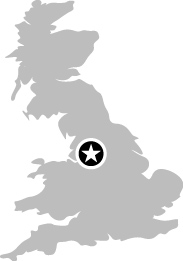066
Sackville Street Gardens, Manchester, England
 53° 28Ⲡ36ⳠN, 2° 14Ⲡ9ⳠW
53° 28Ⲡ36ⳠN, 2° 14Ⲡ9ⳠW
![]()
âIEKYF ROMSI ADXUO KVKZC GUBJâ
In this small green park, close to the University of Manchester Institute of Science and Technology, sits a bronze statue of the British thinker Alan Turing.
Turing is sitting on a bronze park bench holding an apple in one hand, his shirt collar undone and his tie loosened. At his feet sits a plaque reading âFather of Computer Science, Mathematician, Logician, Wartime Codebreaker, Victim of Prejudice.â If Turing is known at all, it is because of his work on the decryption of the Nazi Enigma cipher during the Second World War (see Chapter 40). But Turingâs legacy is far greater than thatâhe is responsible for large contributions to computer science as we know it.
Turing invented a theoretical computer known today as a Turing Machine. A Turing Machine is a very simple computer with four important components. The first is a tape divided into squares (called cells); the Turing Machine can store one symbol from its alphabet of characters in each square. Symbols are written and read from the tape using the Turing Machineâs head; either the head or the tape moves, so the head can read and write from any cell (Figure 66-1). The Turing Machine uses a table of ...

